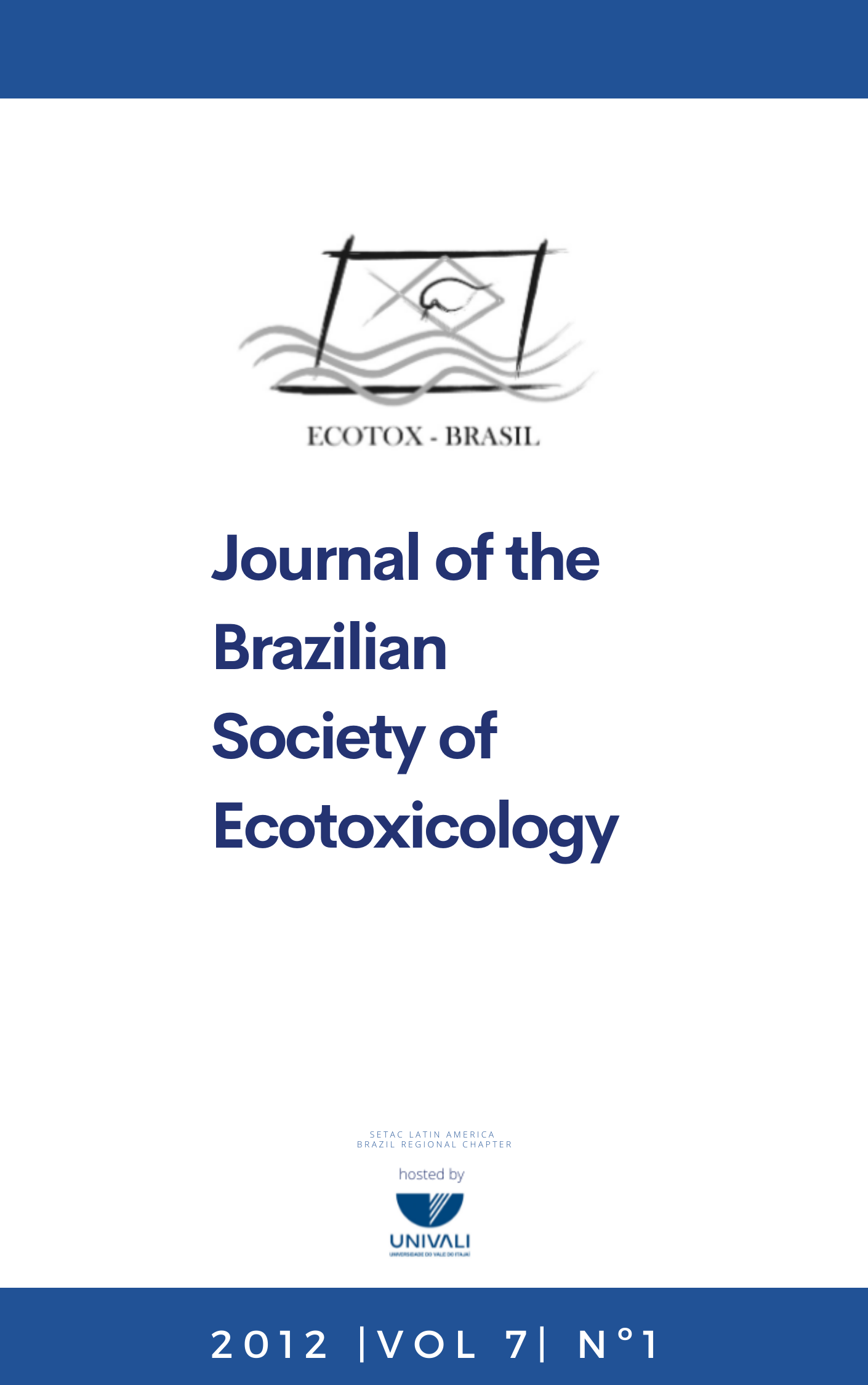Metallothionein in the pond perch Diplectrum radiale (Teleostei) as a biomarker of pollution in Guanabara Bay estuary, Brazil
Abstract
Guanabara Bay is a semi-closed tropical bay located in the center of metropolitan Rio de Janeiro. The ecological integrity of this system has a spatial gradient, with better environmental conditions near the mouth than in the inner bay. The objectives of this study were to monitor the exposure of the pond perch Diplectrum radiale (Perciformes; Serranidae) to metal pollution, using metallothionein as a specific biomarker, and to detect spatial differences in metal contamination in this large water body. The effects of biological factors (allometric condition factor, size, weight, and reproductive stage) and spatial variations on MT levels were also investigated among sampling sites. The results revealed intraspecific sources of variation influencing MT expression. Therefore, it was not possible to use MT as a sensitive biomarker to distinguish heavy metal pollution among sites within this bay. The spatial heterogeneity of metal bioavailability and the probable mobility of individual fish contributed to those findings. However, the pond perch can still be considered a good target organism to evaluate the effects of metal contamination through comparison with other estuarine ecosystems on the Brazilian coast.
Key words: estuary, Guanabara Bay, metallothionein, teleost
Downloads
How to Cite
Issue
Section
License
Copyright © 2006 ECOTOX-Brasil
Copyright notice: It is a condition for publication that manuscripts submitted to this journal have not yet been published and will not be simultaneously submitted or published elsewhere. By submitting a manuscript, the authors agree that copyright for their article is transferred to the Sociedade Brasileira de Ecotoxicologia (ECOTOX-Brasil) if and when the article is accepted for publication. The copyright covers the exclusive rights to reproduce and distribute articles, including reprints, photographic reproductions or any other reproduction of a similar nature, including translations. No part of this publication may be reproduced, stored in a retrieval system or transmitted in any form or by any means, electronic, mechanical, photocopying, recording or otherwise, without permission of the publisher.
Notice: While every effort is made by the EEC, editors and editorial board to see that no inaccurate or misleading data, opinions or statements appear in this journal, they wish to make it clear that the contents of the articles and advertisements published herein are the sole responsibility of the contributors or advertisers concerned. Accordingly, the EEC, the editorial board and editors and their respective employees, officers and agents accept no responsibility or liability whatsoever for the consequences of any inaccurate or misleading data, opinion or statement.




